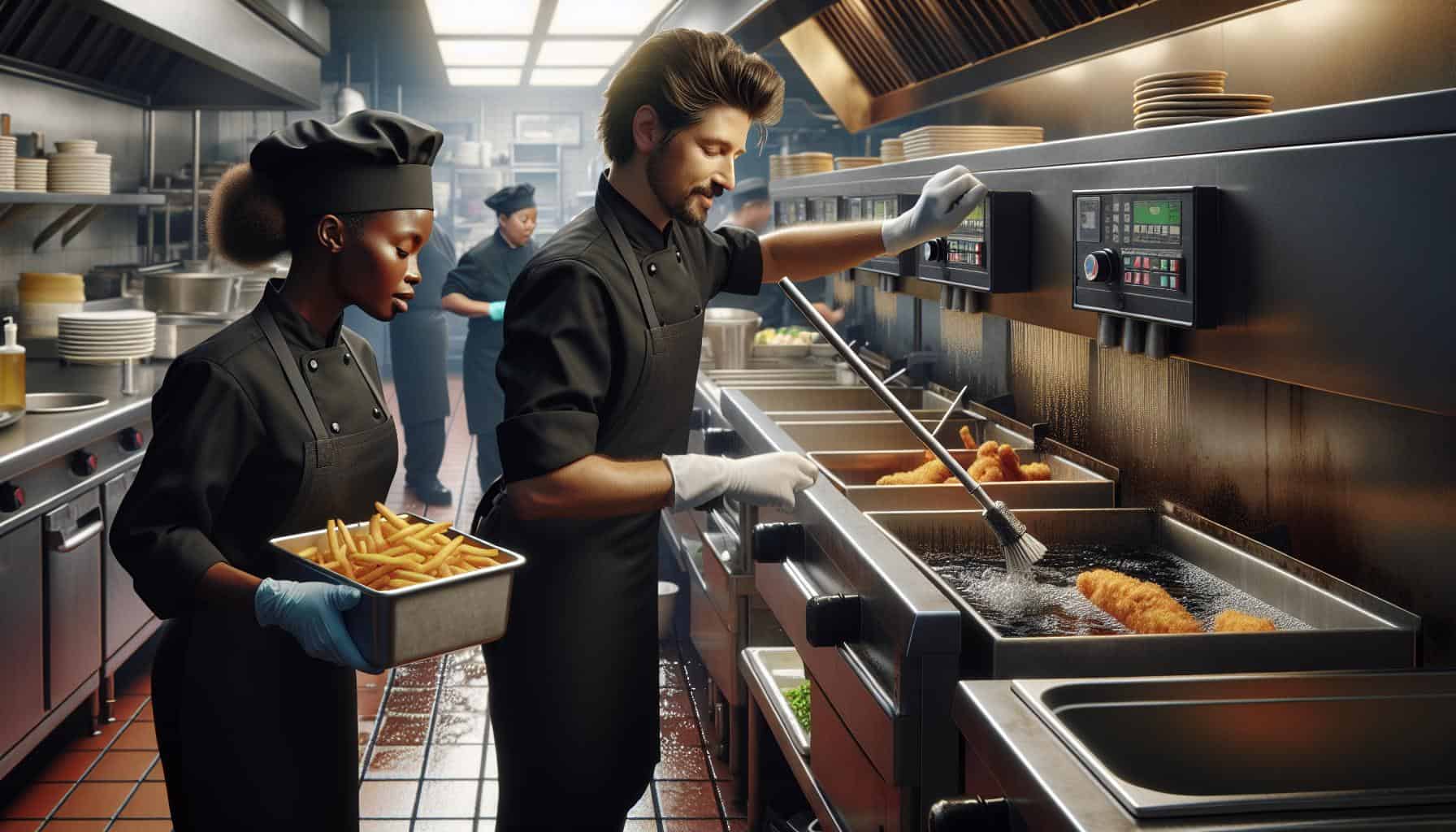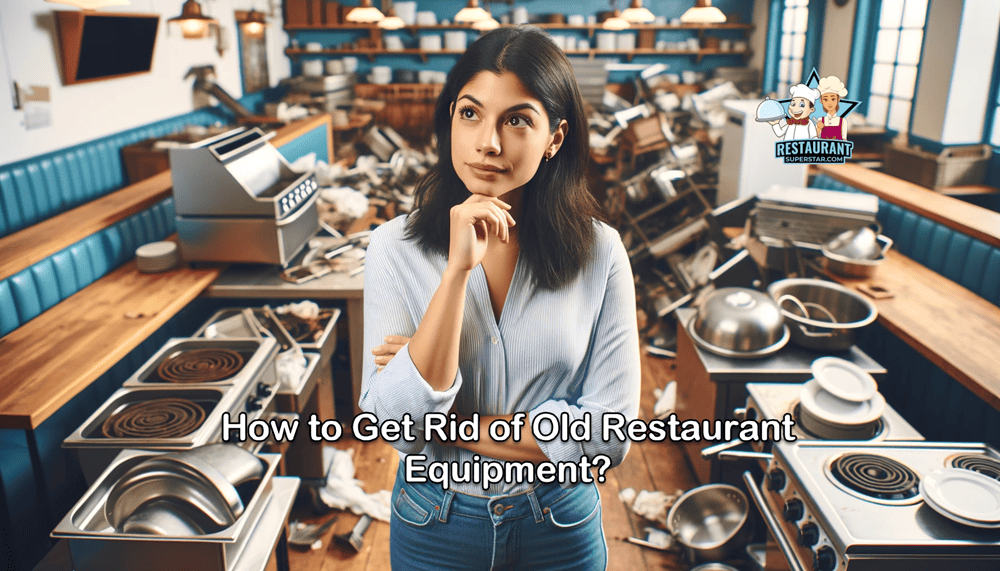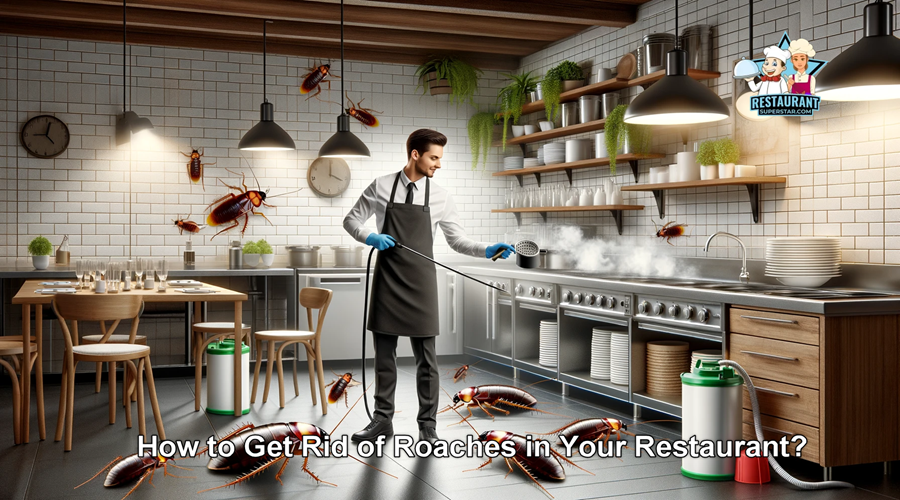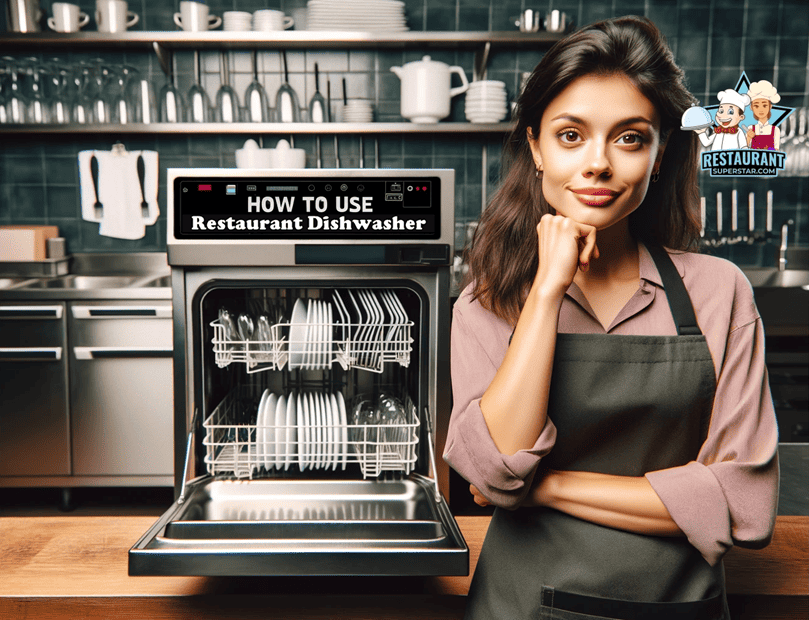What Does a Chef Wear? (21+ Important Facts)
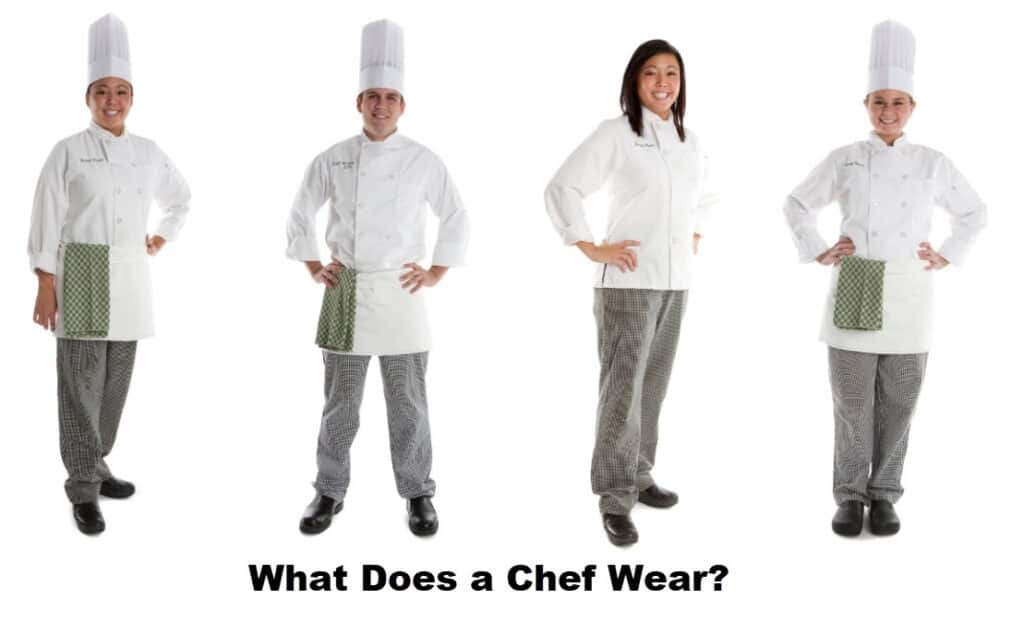
The last time I went to a business networking event the most frequently asked question was, “What does a chef wear?” This is because a restaurant is only as outstanding as its chef. Restaurant owners want their chefs to stand out physically and skillfully.
A chef’s outfit set is apart from staff members and is easily recognizable. The way the question was frequently asked influenced this article’s writing, as others would find this as a solution to some of their questions. Do well to stick to the end of its conclusion.
What does a chef wear? The traditional chef’s costume includes a torque Blanche, tall white hat, apron, and black and white houndstooth trousers. The white cotton jacket is double-breasted. Each component is white except the pants.
Chef’s pants come in various colors, but the industry standard is black and white checkered. The checkered or houndstooth pattern readily hides any food stains or smears. However, you should consult the rest of the team before deciding to purchase the chef’s uniform because they are the ones who know their workplace and job duties the best.
Understanding the Professional Chef’s Uniform
We want to understand a professional chef’s uniform fully. Get to know that clothing such as hats, white jackets, and checkered pants make up the standard professional chef’s outfit. It has a rich history, and chefs who choose to wear it do so both as a tribute to historical customs and as a symbol of their respect and admiration for their line of work.
Aside from the history embedded in the garments, each piece of this professional uniform plays a particular function in protecting and assisting the chef as they do their work. Nothing is missed, from the design to the fabric to the button selection.
How to Dress in the Professional Kitchen
Food service employees must wear clean blouses, skirts, and pants, as well as caps or other suitable hair restrictions. Staff members are responsible for ensuring that their attire is ideal for the task at hand, clean, without rips or holes, and in good shape.
What Does a Chef Wear?
A Chef’s Classical attire includes:
Totally White Hat (tall, pleated cylindrical-shaped hat)
The word “toque” has been used for several thousand years; its root word in Arabic means “hat.” The French first used the term “toque Blanche” in the 1800s to describe the white hat that chefs wear as part of their uniforms. White is thought to be the purest color, contributing to the kitchen’s appearance of cleanliness.
White, two-button jacket with a knotted fabric button placket
If you want to seem professional and put together in the kitchen, you need to invest in a long-sleeved chef’s coat with knot buttons. This classic style knot button coat is perfect for any professional kitchen, as it has a left chest pocket, a thermometer pocket, and ten cloth knot buttons. This coat combines durable construction with the ease of “wash and wear” functionality.
Pants with a loose fit and a houndstooth design (black and white checks)
This pair of pants is available in the well-liked Houndstooth pattern in both White and Gray. This lovely graphic will make adding some personality to your uniform easier when you want to. This bottom effortlessly matches any outfit or regulated uniform requirement.
The chef’s uniform has its roots in the middle of the 19th century when renowned French chef Marie-Antoine Careme first used it to respect the work of trained cooks. The hat was commonly used earlier, but Marie-Antoine introduced the additional components, such as the color white.
Then, during his tenure at famed London restaurants at the Savoy and Carlton Hotels, French chef Georges Auguste Escoffier brought the uniform to Western nations. It quickly gained worldwide acclaim. Many professional chefs still dress in the traditional uniform nowadays; however, some prefer to wear a skull cap or hair net instead of the full toque Blanche.
The Chef’s Hat
The most well-known part of a chef’s uniform is the toque Blanche, which means “white hat.” When people hear the word “chef,” they often think of a tall, round, starched hat with pleats at the top. The chef’s white apron, called a “toque Blanche,” has been a sign of their power in the kitchen for a long time (their seniority level, knowledge, and authority). In practice, it keeps loose hairs from getting into food while it’s being prepared.
What are the two defining features of a chef’s hat:
The two defining features of a chef’s hat are:
The Height of a Chef’s Hat
Traditionally, a chef’s seniority was indicated by the height of his or her hat. Marie-Antoinette Careme supposedly wore a hat that was 18 inches in height and needed cardboard support to stay erect.
Number of Pleats in a Chef’s Hat
Like that height, custom required the more wrinkles a chef’s hat had, the more seasoned they were. It was often thought that the number of ways a chef understood how to prepare eggs was symbolized by the number of wrinkles in their hat, typically 100. Even if most chefs today don’t have as much pleating, it still shows their expertise in recipes and procedures.
The Chef’s Jacket
The chef’s jacket contains several significant aspects, many of which are practical.
What are chefs’ jacket features?
The chef’s jacket has several essential features that all center on functionality.
Features:
- Fabric: The fabric is created from a thick cotton cloth for protection against heat and any sprays of hot liquids and ventilation.
- Buttons with knots: Buttons made of plastic or metal have a propensity to break or come off, which is risky in a kitchen setting. Cloth buttons with knots work around this. Additionally, they are much simpler to undo if the chef needs to swiftly remove their jacket due to a mishap involving boiling oil or flames.
- Sleeves: Traditionally, sleeves on chef’s uniforms were either short or long. Shortened sleeves keep the uniform out of the way and avoid these dangers, while longer sleeves help protect arms from burns and cuts.
- Retractable and double-breasted: The double layer fulfills two purposes. It adds another layer of protection against heat or burns. However, it may also be rapidly undone if the jacket gets dirty, allowing cooks to keep working without having to stop and change. Additionally, it comes in helpful if they have to appear in the dining area to interact with customers.
Chef Neckerchiefs
In commercial kitchens, the chef’s neckerchief is a common sight. The neckerchief can make the user feel cooler by catching sweat that evaporates from the face and neck, which may appear strange when added to a wardrobe worn in such a hot atmosphere.
The Chef’s Pants
Most chef pants are loose-fitting to allow for movement and prevent hot spillage (close-fitting fabrics hold heat against the skin). Additionally, they have a “houndstooth” design, a two-tone (black and white) outline constructed of illustrative four-pointed designs. This design is excellent for concealing dirt and stains.
The Chef’s Apron
Today’s chefs wear aprons as an additional layer of protection from heat, fire, and stains, even though they aren’t traditionally part of a chef’s uniform. A sturdy, flame-resistant fabric should be used to create a chef’s apron of the highest caliber. Some cooks also prefer large pockets to safely store their necessary cooking items.
The Chef’s Shoes
Regarding chef shoes, comfort and safety are the two main things to consider. Expert chefs spend 10 to 12 hours daily on their feet, so their footwear needs to be well-fitting and shock-absorbing. They must be non-slip and have steel or reinforced toes to guard against hot liquid spills and falling pots for safety.
Although there are several types of shoes available, many cooks like the fit of a clog-based shoe because they:
- Have strong traction that will help to navigate the kitchen.
- They frequently have strengthened toes.
- It includes more cushioning for effective shock absorption.
- The shoe is lace-free, so there is no chance of tripping over a loose lace.
What are the Chef Uniform Functions
A chef’s uniform is more than just an article of clothing. The whole of your ensemble is designed to keep you safe from everyday hazards in the kitchen. The typical chef’s uniform consists of a chef coat, chef trousers, a hat, a neckerchief, an apron, sturdy shoes with nonslip soles, and, on occasion, a hand towel. Even if you aren’t required to wear the jacket and tie, your chef uniform serves a useful function.
Let’s further talk about the functions of each piece of your chef’s attire. You might be surprised to hear that each piece of clothing serves a particular purpose and isn’t merely a fashion statement.
- The double front offers the chef extra insulation and protection from hot liquids, spillage, heat, and other culinary dangers.
- Secondly, it enables a cook to flip the front around to cover up spills and stains.
- Thirdly, it exudes a feeling of homogeneity and style.
Why do Chefs Wear White?
White also symbolizes serenity. It is considerably easier to see stains on a chef’s uniform against a white background; this is crucial if the raw chicken or another pollutant causes the color.
A timely replacement reduces health risks, including allergies and cross-contamination. Because white can easily be breached, stains are not irreversible. White is also reflective, which means it deflects heat rather than absorbs it. White is considered classic or conventional, denotes cleanliness and sanitation, and helps to reflect heat from the kitchen.
Cleanliness
Marie-Antoine believed that white was the best color option because it represents cleanliness, which is essential in a commercial kitchen for both the working environment and the impression it creates on visitors.
Bleaching
White is readily stained but can be cleaned with bleach.
Reflective
Chefs are given additional protection from scalding cooking temperatures because white reflects heat.
How to Take Care of a Chef’s Uniform
Being a cook, bartender, or even a hostess in a restaurant is never clean work. You will undoubtedly get stains, frequently without notice. You can avoid permanent staining or ruining your high-quality uniform parts if you act quickly.
The best way to ensure that your uniform lasts as long as possible is to invest in the best products you can afford, like those from Chef Works, and take great care to preserve them appropriately in between uses.
Why Do Chefs Wear Uniforms?
The chef uniform has a practical purpose in terms of comfort for the personnel and food safety, but it also serves an aesthetic sense. Your restaurant may have an open kitchen where patrons can watch their cuisine produced, or it could be the case that customers rarely see the chefs at your business.
Undoubtedly, a chef’s uniform conveys expertise, regardless of which of them it is. If consumers see a chef in their attire, they could wonder how safe the meal the chef is making is.
History of Chef Coats
Since the middle of the 19th century, this fashion has been followed by generations. Marie-Antoine Carême, a famous French chef, is credited with popularizing the contemporary chef’s uniform. It was customary to wear toques, but he envisioned a uniform as a more fitting way to honor the chef. For symbolic reasons, a chef wears a white coat.
History of Chef Hats
According to one legend, King Henry VIII beheaded a chef when he discovered a hair in his meal. Hats were first worn while cooking by the following chef after he was told to do so and maintain hygiene.
Today, chefs and pastry chefs still wear don toques, but only in front of the public. This particular hat was created by Marie-Antoine Carême almost 200 years ago. Yet, it continues to represent to the outside world the value many chefs place on excellent cuisine..
History of Chef Pants
The custom of dressing in this attire began in the middle of the 19th century. The modern chef’s outfit is said to have been created by well-known French chef Marie-Antoine Carême. He was looking for a uniform to honor the chef even though the toques were already used. The chef’s coat was made of white to symbolize hygiene.
What Not to Wear in the Kitchen
Putting on synthetic clothing in the kitchen is dangerous. Because synthetic clothing melts when heated and readily catches fire. Man has created these using chemicals; polyester and other synthetic fibers burn quickly and dissolve.
Additionally, use an old shirt instead of an apron if you don’t have one. However, avoid wearing anything baggy and big. Garments or sleeves that are too loose risk catching fire or getting tangled in mixer beaters or other machinery.
FAQS
What Are the Parts of a Chef Uniform?
The typical chef’s uniform consists of a chef coat, chef trousers, a hat, a neckerchief, an apron, sturdy shoes with nonslip soles, and, on occasion, a hand towel.
What Is a Chef’s Uniform Called?
Due to the widespread use of the color white, it is generally referred to as the chef uniform and occasionally as the chef’s whites.
Who Can Wear a Chef’s Coat?
Chefs’ coats are only the uniforms worn by chefs and highly qualified cooks. The double layer of cotton protects chefs in the chef coat from hot liquids and splatters and from the heat from ovens, grills, and stovetops.
Why Do Chefs Wear Checkered Pants?
Chefs’ pants with checks might help you disguise spills and stains. A chef can quickly switch jackets to maintain a neat appearance, but not so soon with pants. The filth and grime resulting from using unclean tools, splattering oil, or dropping anything are harder to see in checked pants.
Chef Collar Color Meaning
The color of a chef’s garment truly has no special significance. Most of the time, it comes down to the cook’s personal preferences or the requirement to adhere to the restaurant’s decor.
Chef Uniform Name?
Due to the widespread use of the color white, it is generally referred to as the chef uniform and occasionally as the chef’s whites.
Six Components of a Chefs Uniform
Although specific uniform components are unnecessary, there are a few things you should consider having on hand—at the very least, for occasions when you know you’ll be spending hours in the kitchen preparing a substantial meal.
Hair cover
Although wearing a hat or other head covering is not required by law, it nonetheless makes sense.
Apron
Every restaurant staff must wear an apron even if they are not technically cooking because of its many uses in the kitchen.
A dish towel for the kitchen
A kitchen towel is a valuable item to have on hand in the kitchen, even if it is not strictly a part of a chef’s costume.
Long sleeve length
Although wearing long sleeves in a hot kitchen may seem ridiculous, experts know that doing anything less increases your likelihood of being hurt by flames or hot liquids.
Footwear
Regarding food, feet are frequently forgotten, but experts understand the value of suitable footwear, so if you spend a lot of time in the kitchen, you should too.
Garments that resist fire
A seasoned chef’s outfit is constructed of flame-resistant materials, making it one of its most essential aspects.
Conclusion
It’s critical to comprehend the significance of a chef uniform because it contributes to both food safety and one’s safety, comfort, and professionalism. It is impossible to overlook the many advantages of wearing a uniform in the restaurant industry for both the front and back-of-house workers.
To wrap up, you want to ensure that any decision you make is the best fit for your chefs, as they will be the ones to endure daily hours of standing.
Jeff Smith is a Restaurant Consultant with over 20 years of hospitality experience ranging from server to owner and general manager. He focuses on Restaurant POS technology as well as restaurant marketing. Make sure to check out our world famous restaurant resources page for a comprehensive offering of hand picked resources and tools to help your business. You can also check out some of our other restaurant business articles.

